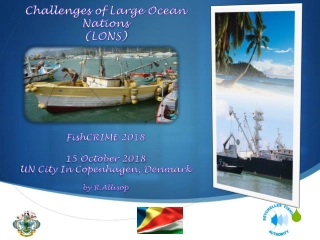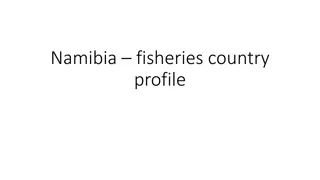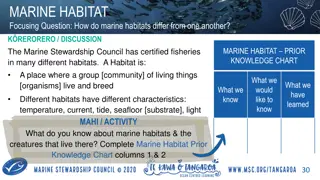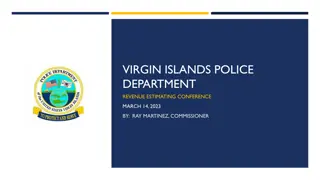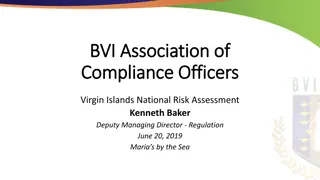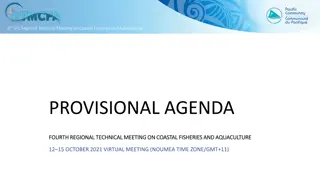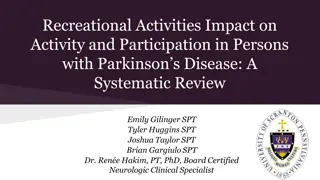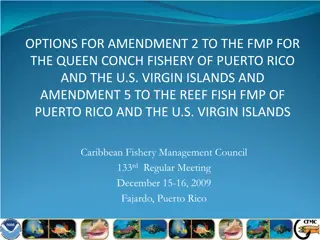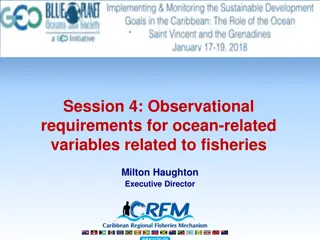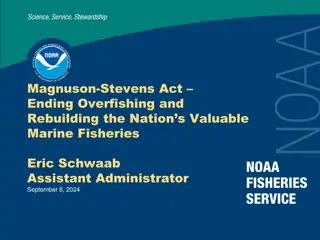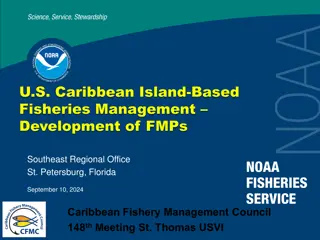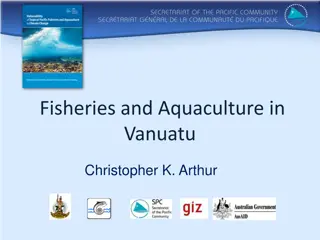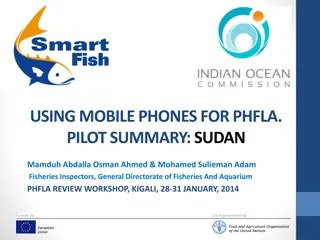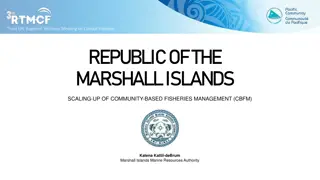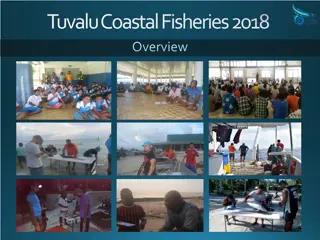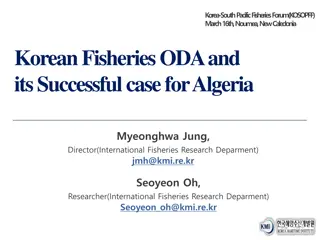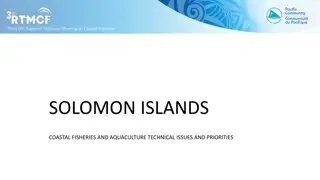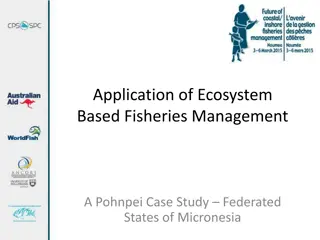History of Marine Recreational Fisheries Survey in US Virgin Islands
The Marine Recreational Fisheries Statistical Survey (MRFSS) program in the US Virgin Islands has a rich history dating back to the late 1970s. Initially conducted through personal interviews and later transitioned to telephone and intercept sampling methods, the program aimed to collect data on recreational fishing activities. Despite challenges such as funding issues and biases in data collection methods, efforts have been made to reinitiate data collection in the region through various sampling techniques over the years. Learn more about the evolution of the MRFSS program in this informative overview.
Download Presentation

Please find below an Image/Link to download the presentation.
The content on the website is provided AS IS for your information and personal use only. It may not be sold, licensed, or shared on other websites without obtaining consent from the author.If you encounter any issues during the download, it is possible that the publisher has removed the file from their server.
You are allowed to download the files provided on this website for personal or commercial use, subject to the condition that they are used lawfully. All files are the property of their respective owners.
The content on the website is provided AS IS for your information and personal use only. It may not be sold, licensed, or shared on other websites without obtaining consent from the author.
E N D
Presentation Transcript
History of the Marine Recreational Fisheries Statistical Survey (MRFSS) in the United States Virgin Islands (USVI) U.S. Virgin Islands Marine Recreational Information (MRIP) Program Workshop September 10-12, 2012 Southeast Regional Office Sustainable Fisheries /Caribbean Branch St. Petersburg, Florida
Background Most species of fish in estuarine and inshore areas, as well as many in open waters, are harvested jointly by recreational and commercial fishermen. Catches by the marine recreational fishery are a significant portion of the total landings of many marine species. Passage of the Magnuson Fishery Conservation and Management Act in 1976 mandated collection of data for both commercial and recreational marine fisheries. http://www.st.nmfs.noaa.gov/st1/recreational/overview/overview.html
Background NOAA Fisheries Glossary MRFSS is an annual national survey conducted by the NMFS, in cooperation with the coastal states, to estimate the number, catch, and effort of recreational fishermen. Implemented nationally in 1979 (except in Alaska) as mandated by the Sustainable Fisheries Act. Following several years of testing, a standard method of data collection and statistical estimation was initiated in 1981
http://www.st.nmfs.noaa.gov/st1/recreational/overview/overview.htmlhttp://www.st.nmfs.noaa.gov/st1/recreational/overview/overview.html
The MRFSS Program History in the USVI 1979-1981: The MRFSS program was conducted in the U.S. Caribbean by personal interviews at individual homes, rather than by telephone surveys. 1982 - Insufficient funds caused the MRFSS program sampling to be discontinued in the U.S. Caribbean. 1986 The USVI Department of Fish and Wildlife (DWF) carried out a telephone survey to evaluate the efficacy of the telephone sampling technique. The survey: tried to collect fisheries data for the recreational non-charter boat fishery around the USVI . found that telephone surveys by themselves may provide biased data on recreational fishing in the USVI. concluded that mail surveys and limited creel surveys should supplement the phone surveys.
The MRFSS Program History in the USVI Cont. 1999 NOAA Fisheries and the USVI DFW reinitiate efforts to collect recreational data in the U.S. Caribbean. 1999 In December, telephone sampling is reinitiated in the USVI as telephone ownership rates appeared adequate . 2000 In March, intercept sampling begins in USVI. 2001 Data collection stops.
Difficulties with Implementing the MRFSS Program in the USVI Difficulty in recruiting, hiring, and retaining intercept samplers in the U.S. Caribbean, especially in the USVI, apparently because there is not much interest within the population for this type of part-time work. Low efficiency because many fishing access sites are characterized by very low activity, making it more difficult and expensive to obtain samples. Subsistence fishing is not being captured by the MRFSS program. (Source: Osborn and Lowther 2002)
Difficulties with Implementing the MRFSS Program in USVI In both PR and the USVI, there were problems in getting interviewers to report back in a timely fashion and to send in completed data forms. Inexperience of the interviewers, especially with respect to identifying anglers to interview and convincing those anglers to submit to an interview. More recent data information on household populations and phone ownership needs to be available. Data on household populations by island in the USVI is needed to improve sampling. (Source: Osborn and Lowther 2002)
Revised Methodology (MRFSS to MRIP) Traditional MRFSS: Estimates from the Access Point Angler Intercept Survey (APAIS) were calculated using unweighted data that did not reflect the complex sampling design and contained some intercepts that were not obtained through probability sampling. The resulting MRFSS estimates were design-biased and have been criticized by both the National Research Council (2006) and constituents. To address this issue, several changes were made as part of the new MRIP APAIS estimation method: First and foremost, a design-based method for estimating catch rate from the APAIS data was developed to calculate new MRIP estimates. Additionally, all non-probability convenience sample data, previously included in the MRFSS APAIS, has been eliminated from MRIP APAIS estimation. Lastly, a statistical adjustment has been applied to account for the fact that only a fraction of all the anglers were being observed at a selected site during a sampled day. This improved method has been used to calculate revised Atlantic and Gulf coast catch and effort estimates back through 2004. Revisions have not yet been made for the U.S. Caribbean (Puerto Rico).


